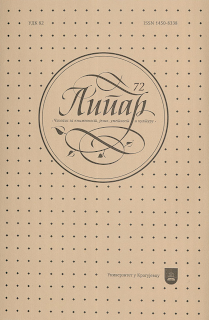STUDENT METACOGNITIVE AWARENESS IN L2 WRITING: COMPETENCE VS. PERFORMANCE
STUDENT METACOGNITIVE AWARENESS IN L2 WRITING: COMPETENCE VS. PERFORMANCE
Author(s): Branka L. MilenkovićSubject(s): Language and Literature Studies, Foreign languages learning, Applied Linguistics, Studies of Literature, Cognitive linguistics, Philology, Translation Studies, British Literature
Published by: Универзитет у Крагујевцу
Keywords: L2 writing;reflective writing;interactive resources;interactional resources;metadiscourse
Summary/Abstract: Writing in a second language certainly embodies constraints that are not met in L1 writing due to numerous decisions L2 learners make while producing a text. Many researches have shown that L2 writing is largely based on decision-making with relation to form and search for appropriate words which make the writing process even more complex and time-consuming. Therefore, communicating with the readers through the use of metadiscourse poses an addi- tional obstacle in L2 writing. This paper is concerned with the use of metadiscourse markers in L2 student writing at the Department of English language, at the University of Kragujevac in Serbia. In essay writing research we frequently observe quantitative analysis of specific lan- guage items, however, in this research, we attempt to juxtapose the quantifiable metadiscourse items in student writing with their thinking processes and decision-making while composing. Thus, the research correlates three insights, one being the students’ liability to deep writing, which relies on their metacognitive awareness in writing, established through the modified questionnaire of the Inventory of Processes in College Composition (Lavelle and Zuercher 2001) and based on previous research (Milenkovic & Lojanica 2015). Students’ responses are then correlated with the analysis of 33 student essays on behalf of the use of metadiscourse mark- ers based on A model of metadiscourse in academic texts established by Hyland and Tse (2004). Finally, the students’ metacognitive awareness in writing is analyzed through an introspective questionnaire with the aim to yield qualitative responses in relation to their cognitive ability to reflect upon their writing. The results of the study confirm the common belief that using metadiscourse features is a constraint in L2 writing. Evidently there is a disproportion between the metadiscourse items students use in writing with relation to what they believe that they use and students have displayed more metacognitive awareness in relation to interactive resources as opposing to the interactional resources in academic writing. Implications of the results may establish a basis for a modified teaching practice in second language writing instruction with the aim to enhance students’ communicative competence in writing.
Journal: Липар - часопис за књижевност, језик, уметност и културу
- Issue Year: XXI/2020
- Issue No: 72
- Page Range: 119-138
- Page Count: 20
- Language: English

